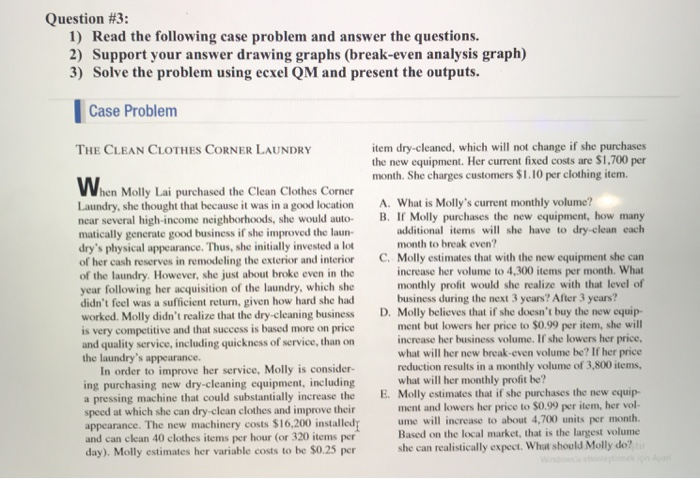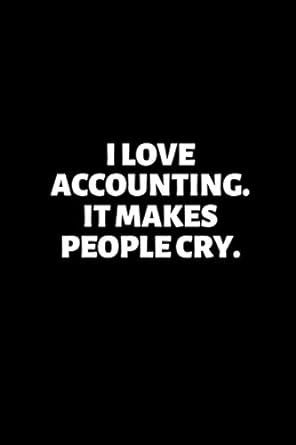Question #3: 1) Read the following case problem and answer the questions. 2) Support your answer drawing graphs (break-even analysis graph) 3) Solve the problem using ecxel QM and present the outputs. Case Problem THE CLEAN CLOTHES CORNER LAUNDRY When Molly Lai purchased the Clean Clothes Corner Laundry, she thought that because it was in a good location ncar several high-income neighborhoods, she would auto- matically generate good business if she improved the laun dry's physical appearance. Thus, she initially invested a lot of her cash reserves in remodeling the exterior and interior of the laundry. However, she just about broke even in the year following her acquisition of the laundry, which she didn't feel was a sufficient return, given how hard she had worked. Molly didn't realize that the dry-cleaning business is very competitive and that success is based more on price and quality service, including quickness of service, than on the laundry's appearance. In order to improve her service, Molly is consider ing purchasing new dry-cleaning equipment, including a pressing machine that could substantially increase the speed at which she can dry-clean clothes and improve their appearance. The new machinery costs $16,200 installed and can clean 40 clothes items per hour (or 320 items per day). Molly estimates her variable costs to be $0.25 per item dry-cleaned, which will not change if she purchases the new equipment. Her current fixed costs are $1,700 per month. She charges customers $110 per clothing item. A. What is Molly's current monthly volume? B. If Molly purchases the new equipment, how many additional items will she have to dry-clean each month to break even? C. Molly estimates that with the new equipment she can increase her volume to 4,300 items per month. What monthly profit would she realize with that level of business during the next 3 years? After 3 years? D. Molly believes that if she doesn't buy the new equip ment but lowers her price to $0.99 per item, she will increase her business volume. If she lowers her price, what will her new break-even volume be? If her price reduction results in a monthly volume of 3,800 items, what will her monthly profit be? E. Molly estimates that if she purchases the new equip ment and lowers her price to $0.99 per item, her vol- ume will increase to about 4,700 units per month. Based on the local market, that is the largest volume she can realistically expect. What should Molly do







